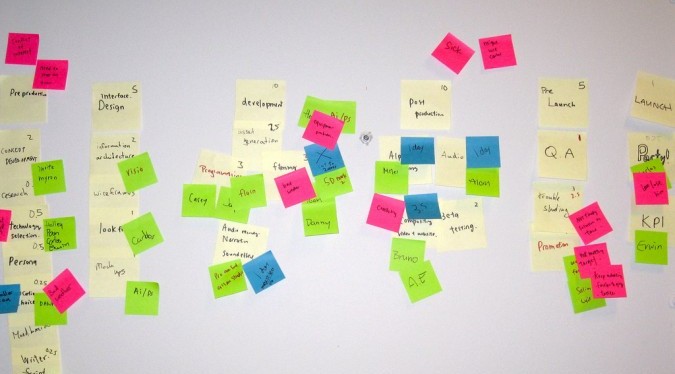 A lot of developers take a one-and-done approach to their clients. That is, they build a single WordPress site to the client’s specifications then walk away. They may build another site for this client in the future but there isn’t any carryover work. There aren’t long-term contracts involved.
A lot of developers take a one-and-done approach to their clients. That is, they build a single WordPress site to the client’s specifications then walk away. They may build another site for this client in the future but there isn’t any carryover work. There aren’t long-term contracts involved.
Failing to consider this route is to miss out on a huge potential for profit. While you may not be able to turn every client into a long-term client, you can convert a good number of them so long as you put a few things into place before, during, and after site launch.
Building a Site Management Plan
One of the biggest problems developers have is when a client requests changes to a site days, weeks, and even months after a site has been published — for no additional cost, of course. It’s hard to say no because you want to keep the client happy because he can act as an advocate on your behalf. And you understandably want to continue to make a good impression. You want to appear accommodating, but when constant revision requests eat into the time you’ve set aside for current clients, well, that’s when you have a problem and you have to draw the line.
Thankfully, you can avoid this altogether by presenting the possibility of a site management plan before you even begin WordPress site development. This way, everyone involved knows precisely what to expect. Your client will feel that all of his needs are met and you won’t feel taken advantage of: it’s a win-win.
When putting together a proposal for a client, you can add the site management plan right onto it. But what should this entail? For a WordPress site in particular, such a plan could include the following for a set monthly fee:
Support
One of the key elements of a site management plan is offering support. Think of it this way: should somebody run into problems while trying to use a service, he or she would submit a support ticket or contact customer service, right? So, if your client runs into any issues while trying to write blog posts, add pages, or what have you, it makes sense that you should make yourself available to answer questions, troubleshoot, and offer generalized support.
Since an issue could arise at anytime following site launch, you need to make it abundantly clear that your support is an extra after a designated period of time. For instance, you may wish to include one month of support for your client following the site’s launch as a part of the original package. But anything after that would be an extra recurring fee. Both hourly and retainer pricing structures will work for this kind of task.
Regular Maintenance
The largest ongoing contract you can net for a development client is for site maintenance. The web is an ever-changing medium, and it’s important to stay up-to-date. And it’s your job to relay that importance to your clients right from the start of your relationship.
A maintenance package would account for things like WordPress site updates, Theme updates, and plugin updates. It can also include tasks like adding new pages, search engine optimization, and troubleshooting. Typically, developers select a set fee for this kind of service as a recurring monthly fee.
Offer Training

Rather than offering a support or maintenance package, you can offer training that helps your clients manage their sites themselves. While this will likely result in less income in the long-term for you, it might be the best route if you’re more interested in site development than site maintenance.
You can set up training in a number of ways. One method that can be particularly beneficial is to put together video chats to guide a client through the various processes involved with working in WordPress. Skype video and Google+ Hangouts offer the ability to screen share, which is an essential component to any hands-on training course. You can make appointments that fit both of your schedules.
You also have the ability to offer additional training courses later on any time there’s a major update to the WordPress Core or a new feature is implemented. This keeps the door open for future opportunities with old clients. And even though it may not be a consistently ongoing thing, it’s nice to know you could appeal to previous customers in this fashion.
Documentation
Another way to increase the duration of your client relationship is to create documentation as a method of support. You can build a set of documentation (PDF, videos, etc) that give your clients an in-depth look at how to manage their sites on their own time. You can include this in the initial web development package or as an extra. Either way, the mere act of offering it shows you’re concerned with how your client’s site fares, even when you’re no longer involved.
Making Your Pitch
One of the best ways to make your pitch for ongoing work with a client is to include it in your proposal, as we mentioned above. By doing this, there’s nothing hidden from the client. She knows from the outset what to expect from you and what will be considered an extra and will cost additional money.
You can, for starters, outline the importance of site maintenance and/or support. Then offer a discount on these services for those who have purchased a full WordPress site development package from you.
Client Retention
A major part of getting a client to transition from a onetime buyer to a long-term customer is to enact solid client retention measures. Basically, you need to do your best to make sure each and every client walks away feeling satisfied with the product, quality, and service you’ve provided. A few ways to accomplish this include:
- Communicating clearly. Let the client know what you’ll provide for what cost upfront. If you foresee any changes to the plan, notify your clients immediately. Be open and honest.
- Being an appreciative service provider. Make your clients feel valued. Send out thank you notes following site launch. Convey a general sense of appreciativeness for their patronage.
- Follow up. A simple follow-up email a few months after a site launches could bring more work your way. And it literally only takes a few seconds to do. This is worth the time investment several times over.
Conclusion
Getting a WordPress site off the ground is a major undertaking. While it may be tempting to wipe your hands of the whole thing after launch and walk away, I strongly advise against this. Even if you’re not in the WordPress site management business, you can perform these tasks for current customers. This has the benefit of adding an income stream to your business and retaining clients who would have otherwise gone on their way without you. One-off clients can easily become long-term clients. All you have to do to get the ball rolling is ask!
Have you ever tried to encourage a client to stick with you for the long haul through a support, site management, or training plan? What did you do to pin down the contract? We’d love to hear about your experiences.
Image credit: VFS Digital Design, Official U.S. Navy Imagery

Leave a Reply